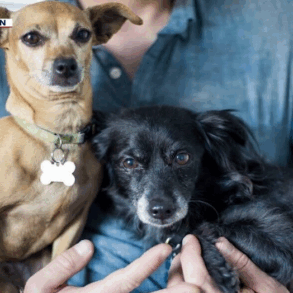
When I first became interested in dog behavior there was a well-entrenched belief that young puppies, less than 6 months of age, would not benefit from any sort of formal dog obedience classes. The argument was that puppies were too excitable and lacked the ability to focus their attention on learning and so there was little of value to be gained by enrolling them in any kind of training class. For this reason, owners were actively discouraged from putting their pre-adolescent puppies in dog classes. However, recent research seems to have turned that set of beliefs on its head, suggesting that early training in dog classes provides a long list of behavioral benefits when that puppy grows up.
The Research
The revolution in our thinking about the psychological development of dog behavior can be traced back to research conducted over the period from 1945 to 1965. This was a massive research project conducted by John Paul Scott and his associates at Jackson Laboratories in Bar Harbor, Maine. During that time, Scott and his colleagues bred, raised, trained, and tested hundreds of purebred and deliberately crossbred dogs, studying how their behavior changed from birth to 1 year of age. They set out to ask “How does heredity influence behavior and how does it interact with early experience?” Their results made it clear that early experiences, environmental interactions, and learning could alter the lifelong behavior patterns of a dog.
Critical Periods
One of the Jackson Lab’s most important findings was that during the first year of life dogs passed through at least 3 important periods of development during which experiences could affect their later performance in life. Each period is different in length and there is some overlap. The first is the “primary period” which begins on about the third day of life and ends on about day 16. The second is the “socialization period” which begins at about 3 weeks of age and lasts until the pup is about 12 to 14 weeks old. The third is the “juvenile period” which continues through 6 or perhaps up to 9 months of age. Scott called these “critical periods” which he defined as “a special time in life when a small amount of experience will produce a great effect on later behavior.”
During the socialization period, dogs learn how to interact with other dogs and unfamiliar humans, and how to be comfortable around them. This is helped by the fact that somewhere around 3 weeks of age puppies show lower fearfulness and a higher tendency to approach an unfamiliar person, although this behavior gradually declines with age. During the juvenile period dogs learn how to control their environment and adjust their behaviors to meet situational needs.
The Origin of Puppy Classes
I remember once speaking with Scott and asking him what implications his analyses and data suggested when it comes to the matter of putting dogs into formal classes. His response was, “The younger the animal is when he is offered the opportunity to learn or experience, the greater the effect.”
Ian Dunbar, who holds degrees in veterinary science and psychology, implemented this idea in 1981 when he introduced the concept of “puppy classes,” which are sometimes referred to as “puppy socialization classes.” The idea behind these classes is to have puppies interact with many different humans and dogs and also to learn some basic obedience commands, in an atmosphere of many positive rewards. Dogs are usually accepted into those classes from the time that they are released by their breeder (usually around 8 weeks or so). Such puppy classes have become very popular and are now available in most larger urban centers.
A New Investigation
The science suggests that early experiences are very important in puppy behavior development. Unfortunately, the question of whether training very young dogs in formal obedience or puppy classes demonstrably has any lasting benefits for when they grow into their adult years has received little systematic experimental testing. That gap has been filled by a relatively recent investigation.
According to the research team of Ian Dinwoodie, Vivian Zottola, and Nicolas Dodman from the Cummings School of Veterinary Medicine at Tufts University and the Center for Canine Behavior Studies at Salisbury Connecticut, “The present study sought to explore the optimal age for puppy training, whether training in the first 3 months produces better outcomes than the ensuing months.”
This investigation involved a survey in which 641 owners provided information on 1,023 dogs. The dogs were split into two groups; 48% attended puppy training, and the rest had not.
Do Puppy Classes Improve Dog Behavior?
As is often the case in larger studies, the data analysis was extensive and covered a broad range of issues, many more than we can deal with in our limited space here. However, the main results can be easily summarized by noting that there were no differences in later behavioral effects comparing the results across dogs that began puppy training at 1-3 months, 4 months, and 5-6 months of age. However, if we compare the puppies that began training at any age during the first 6 months of the dog’s life with those who began training later than 6 months we find that early training was associated with a reduced likelihood of developing a variety negative behaviors in later life. Specifically the team found that there was:
- A 29 percent reduction in the likelihood of displaying aggressive behavior.
- A 40 percent reduction in the likelihood of exhibiting destructive behavior.
- A 36 percent reduction in the likelihood of having compulsive behaviors.
- A 32 percent reduction in the odds of engaging in excessive barking.
In other words, putting a dog into puppy training before 6 months of age seems to be beneficial in reducing a substantial set of unwanted behaviors when the dog becomes an adult.
When to Bring a Puppy Home
Although not part of the major focus of this research, a secondary finding was that the age which a dog is acquired from a breeder or shelter was important as well. Dogs that were adopted at 12 weeks of age or younger were found to be 35 percent less likely to show fear or anxiety symptoms as adults, and also were 50 percent less likely to demonstrate destructive behaviors when compared to those who reached their final home at an older age.
Given the magnitude of these positive results, I think that it is safe to conclude that not only can puppies benefit from early enrollment in puppy and obedience classes, but they can benefit a great deal from such an experience.
Copyright SC Psychological Enterprises Ltd. May not be reprinted or reposted without permission
This post was originally published on this site be sure to check out more of their content.












































